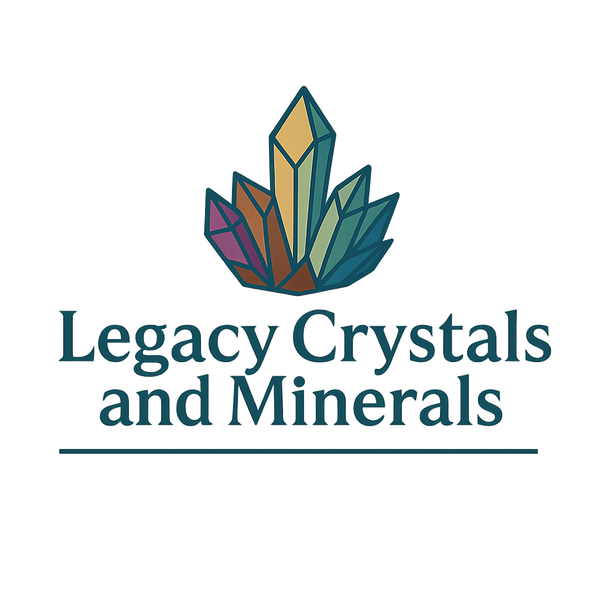
Mineral Localities Explained — Why Source Matters
Share
Where your crystal comes from tells a story — about the Earth, about geology, and sometimes about the people who mined it. For collectors, healers, and admirers of natural beauty, understanding locality adds depth to every piece. Here's why source matters.
What Is a Mineral Locality?
A mineral locality refers to the exact place where a crystal or mineral specimen was discovered. This could be a named mine, a mountain range, a village region, or even a specific tunnel within a deposit.
Localities affect everything — from a crystal’s color and shape to its value, rarity, and reputation. A fluorite cube from China and one from England may both be beautiful, but they carry entirely different histories and identities.
Why Locality Affects Value
- 💎 Rarity: Some mines are now closed or depleted. Specimens from these areas become more valuable over time (e.g., Rogerley fluorite, Sweet Home rhodochrosite).
- 🧭 Geological Uniqueness: Certain localities produce minerals in forms or colors found nowhere else (e.g., Navajún pyrite cubes, Blueberry Fluorite from Huanggonglang).
- 🏷️ Collectibility: Just like vintage wine, provenance matters. A piece with a named source builds credibility, desirability, and often future resale value.
Examples of Famous Localities
🔹 China
- Yaogangxian (Hunan): Complex fluorite, quartz, pyrite, and stibnite combinations
- Xuanhalong (XHL): Deeply zoned blue-purple fluorite cubes
- Huanggonglang: Blueberry fluorite clusters with frosted finishes
- Longyan, Fujian: Red hematite over quartz and pyrite
🔹 Spain
- Navajún: Perfect cubic pyrite crystals in matrix — world-renowned
- Asturias: Violet fluorite cubes, often on dolomite or barite
🔹 United States
- Cave-in-Rock, Illinois: Deeply zoned purple and yellow fluorite, often in pristine cubes
- Sweet Home Mine, Colorado: Vivid red rhodochrosite crystals — museum-quality
🔹 Africa
- Okorusu, Namibia: Green, purple, and yellow fluorite with sharp color zoning
- Goboboseb Mountains, Namibia: Home to stunning quartz clusters — including scepters, phantoms, and amethyst with hematite inclusions. Known for high clarity and often UV-reactive material.
- Brandberg, Namibia: Famous for deeply spiritual quartz crystals with smoky, amethyst, and clear zones — often with enhydro bubbles or internal phantoms. Considered powerful for meditation and energy work.
- Democratic Republic of Congo: Natural citrine and smoky quartz clusters with rich golden tone
🔹 Canada
- Mont Saint-Hilaire, Quebec: World-famous for rare and unusual mineral species (over 400 identified)
- Thunder Bay, Ontario: Known for amethyst clusters with hematite inclusions — Canada's official mineral
- Bay of Fundy, Nova Scotia: Zeolites, agate, and calcite in striking coastal formations
- Elmwood Mine Area, Manitoba: Fluorite, galena, and sphalerite in limited production zones
Why Source Matters to You
Whether you're collecting for investment, spiritual practice, or personal connection, knowing where your mineral came from adds authenticity and meaning.
- 📚 Collectors want to trace provenance — it builds historical and market value.
- 🔮 Energy workers may connect to the land or energetic signature of a specific region.
- 🖼️ Designers and buyers appreciate the story behind a unique visual piece.
Legacy’s Commitment to Transparency
At Legacy Crystals and Minerals, we identify and include origin information whenever possible — down to the mine level. We work directly with trusted partners in China, South America, Africa, North America, and Europe to bring you minerals with integrity.
When we say a fluorite is from XHL or a pyrite is from Navajún, we mean it. Because where your mineral comes from is part of the story you're choosing to carry forward.
Final Thoughts: Provenance is Power
A crystal’s story starts long before it arrives in your hands — it begins deep within the Earth, in places shaped by time, pressure, and elemental fire. Understanding where your piece came from connects you not only to its beauty, but to its history, its landscape, and its energy.



